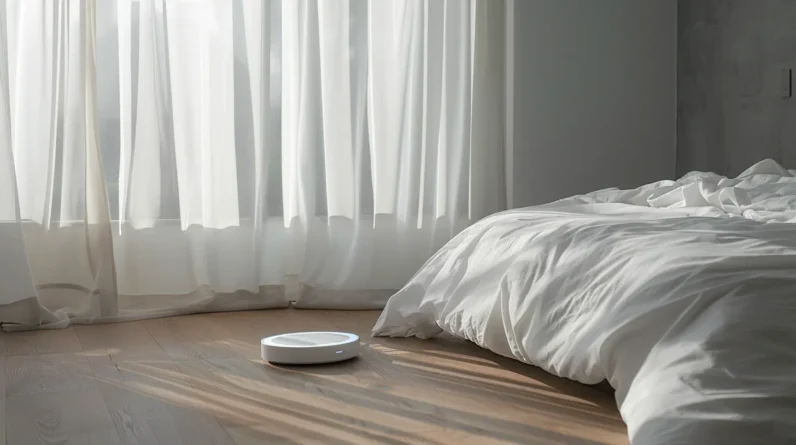
When setting up smart home devices, we’ll need to implement multiple layers of security protection. First, we’ll secure the network with WPA3 encryption and dedicated VLANs for device isolation. We’ll establish robust password protocols using unique 12+ character combinations and enable two-factor authentication wherever possible. It’s critical to maintain regular firmware updates, downloading only from official sources, while setting up automated update schedules. We’ll segment our Wi-Fi network specifically for IoT devices and secure physical access to all hub equipment. These fundamental steps lay the groundwork for an extensive smart home security strategy that goes much deeper.
Network Security Fundamentals
Securing smart device networks requires a robust foundation of crucial security protocols and practices. We’ll establish multiple layers of defense by implementing WPA3 encryption, network segmentation, and continuous monitoring protocols. Let’s configure dedicated VLANs to isolate smart devices from critical network infrastructure.
We must deploy enterprise-grade firewalls with intrusion detection systems (IDS) and maintain strict access control lists (ACLs). It’s imperative to regularly update firmware, patch vulnerabilities, and scan for potential network breaches. We’ll implement MAC address filtering and disable unused ports to minimize attack surfaces.
Our network security framework should include automated threat detection, regular security audits, and encrypted data transmission protocols. We’re establishing secure DNS configurations and implementing strong authentication mechanisms to prevent unauthorized access while maintaining network performance and reliability.
Device Password Management
Strong password management forms the cornerstone of smart device security protocols. We’ll implement unique passwords for each device, using a minimum of 12 characters that combine uppercase, lowercase, numbers, and special symbols. Let’s avoid common patterns and never reuse passwords across multiple devices.
We must regularly update these credentials every 90 days and maintain them in an encrypted password manager. For our smart home ecosystem, we’ll enable two-factor authentication whenever available and disable any default passwords that came with the devices. When configuring multiple user accounts, we’ll assign unique credentials to each user, tracking access levels through a centralized management system. Critical devices require more complex passwords with 16+ characters and immediate password changes if we detect any suspicious activity.
Updates and Firmware
While robust password practices safeguard device access, regular firmware updates serve as our frontline defense against evolving security threats. We’ll need to enable automatic updates whenever possible and regularly check for manual updates on devices that don’t offer this feature. Let’s configure our smart devices to notify us when essential security patches become available.
We must verify update authenticity by downloading firmware exclusively from manufacturers’ official channels. It’s vital to maintain a log of all firmware versions and update histories across our device network. During the update process, we’ll make certain devices remain powered and connected until completion to prevent corruption. If a device fails to update, we’ll need to quarantine it from our network until we can resolve the issue or replace the device to maintain our security perimeter.
Secure Wi-Fi Setup
In accordance with industry protocols, a properly configured Wi-Fi network forms the foundation of smart device security. We’ll implement WPA3 encryption whenever possible, with WPA2-AES as a minimum fallback standard. Let’s verify we’re using a strong, unique SSID that doesn’t reveal personal information or device details.
We must establish a dedicated IoT network segment, separate from our primary network, using VLAN configurations or guest network capabilities. This segmentation prevents compromised devices from accessing sensitive data on our main network. We’ll disable WPS and remote management features unless specifically required, and we’ll change default router credentials immediately. Implementation of MAC address filtering adds another security layer, though it shouldn’t be our sole defense mechanism. Regular security audits of our Wi-Fi configuration verify ongoing protection of our smart device ecosystem.
Physical Access Controls
Physical controls represent an essential layer of defense for smart device security that’s often overlooked. We’ll focus on three critical control measures to protect our smart devices from unauthorized physical tampering. First, we need to secure all hub devices and network equipment in locked cabinets or rooms with restricted access. Next, we’ll implement tamper-evident seals on device casings and ports to detect any attempted breaches.
For portable smart devices, we’re implementing a secure storage protocol when they’re not in use. We’ll maintain an asset tracking system that logs device locations and authorized handlers. Additionally, we’re installing motion sensors and cameras to monitor areas where critical smart devices operate. These physical safeguards work in conjunction with our digital security measures to create a thorough protection strategy.
Conclusion
We’ve covered essential protocols for securing smart home ecosystems, where 65% of security breaches occur due to weak password implementations. Let’s maintain our cybersecurity posture by implementing robust network segmentation, enforcing strong authentication mechanisms, and conducting regular firmware updates. We’ll stay vigilant with physical access controls and Wi-Fi security protocols. By following these technical specifications, we’re establishing a resilient defense against evolving IoT threats.







